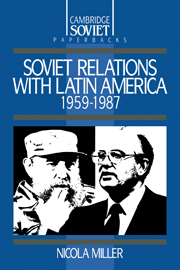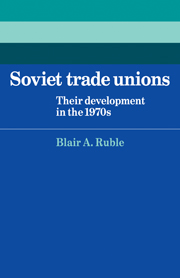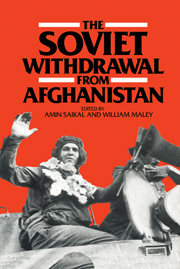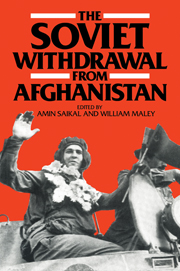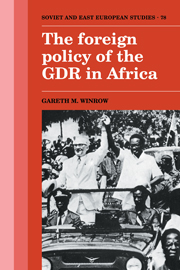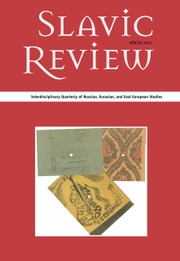Soviet Relations with Latin America, 1959–1987
This book was first published in 1989. The Soviet presence and purposes in Latin America are a matter of great controversy, yet no serious study was hitherto combined with a regional perspective (concentrating on the nature and regional impact of Soviet activity on the ground) and diplomatic analysis, examining the strategic and ideological factors that influence Soviet foreign policy. Nicola Miller's lucid and accessible survey of Soviet-Latin American relations over the past quarter-century demonstrates clearly that existing, heavily 'geo-political' accounts distort the real nature of Soviet activity in the area, closely constrained by local political, social and geographical factors. In a broadly chronological series of case-studies Dr Miller argues that, American counter-influence apart, enormous physical and communicational barriers obstruct Soviet-Latin American relations and that the lack of economic complementarity imposes a natural obstacle to trading growth: even Cuba, often cited as 'proof' of Soviet designs upon the area, is only an apparent exception.
Product details
February 1990Paperback
9780521359795
264 pages
229 × 152 × 15 mm
0.39kg
Available
Table of Contents
- Acknowledgements
- Introduction
- 1. The Soviet interest in Latin America
- 2. 'Communist subversion' in Latin America? The impact of Marxist thought
- 3. Castro's Cuba - 'a gift to the Russians'? The Soviet-Cuban embrace, 1959–1962
- 4. The Soviet-Cuban balancesheet
- 5. 'Socialism with red wine …' Moscow and Chile's Popular Unity experiment
- 6. The Soviet Union and the major Latin American powers
- 7. The USSR and the Central American crisis
- 8. Conclusion
- Appendix
- Bibliography
- Index.

